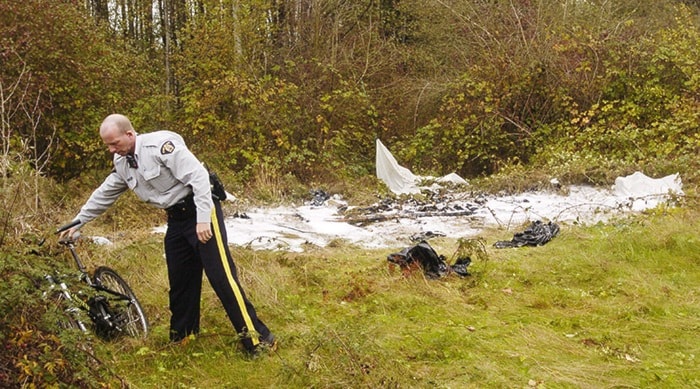It used to be a prime place for the homeless, suitably forested and overlooking the Fraser River, safe and obscure, yet not too far from the downtown and the Salvation Army.
Now the 28 acres of Ministry of Transportation and Infrastructure land along the Haney Bypass is up for sale and being eyed as another part of the jigsaw puzzle in building the downtown.
The property was first on a list of eight possible areas Maple Ridge council is considering for industrial or commercial use, in an attempt to grow its tax base.
The property is currently designated residential, but Mayor Ernie Daykin agrees, there are better uses.
“It’s got great potential,” he said.
“I think there is higher and better use for that property. We’ve got lots of residential.”
Last week, Coun. Bob Masse suggested the treed, sloped and ravined area could be a location for a post-secondary institute.
With the property already owned by the province, it could make it easier financially to create a school of some kind.
The property has the Lougheed Highway on the north side and the Haney Bypass on the south side. A stand of trees buffers the residential areas to the west. The West Coast Express Port Haney station is a few blocks away, while Kanaka Creek Regional Park is just downhill from the property.
Daykin agrees with former mayor Gordy Robson, who says the public should have a say in how the land is developed.
“We need to have that chat,” Daykin said.
“It could have great potential. We’ve got to get away from the 1950s and 1960s planning when it comes to how people get to work.”
Robson said the ministry was trying to sell the property when he was Maple Ridge mayor from 2005 to 2008.
He questioned why the ministry should get maximum value for the property by selling it for residential use.
“The highways department shouldn’t get a windfall, that’s all.”
Council is looking at eight possible areas that could be designated for industrial use in an attempt to provide room for enterprise and reduce its dependence on residential taxes.
Some areas it’s looking at are the Albion industrial area, south of Lougheed Highway and west of 240th Street. For Daykin, that could be one of the first areas to attract industry if property consolidation could occur. Maybe the district could offer incentives for development in that area, as well.
Business parks or commercial development are also considered a priority on the east side of 105th Avenue, where the district has tacit approval from the Agricultural Land Commission for an exclusion from the reserve.
Most of the sites were recommended in a consultant’s report from 2012 that laid out options for industrial or business development.
However, after a meeting in September, council added another 250 acres of farmland on the northeast corner of 203rd Street and 128th Avenue to that list.
Much of that land had already been sought for exclusion from the Agricultural Land Reserve in 2010. The application was refused.
Council has yet to discuss whether it wants to put that property on the list, but Daykin favours doing so.
“It’s worth having another conversation.”
The property is five minutes from the Golden Ears Bridge he pointed out.
